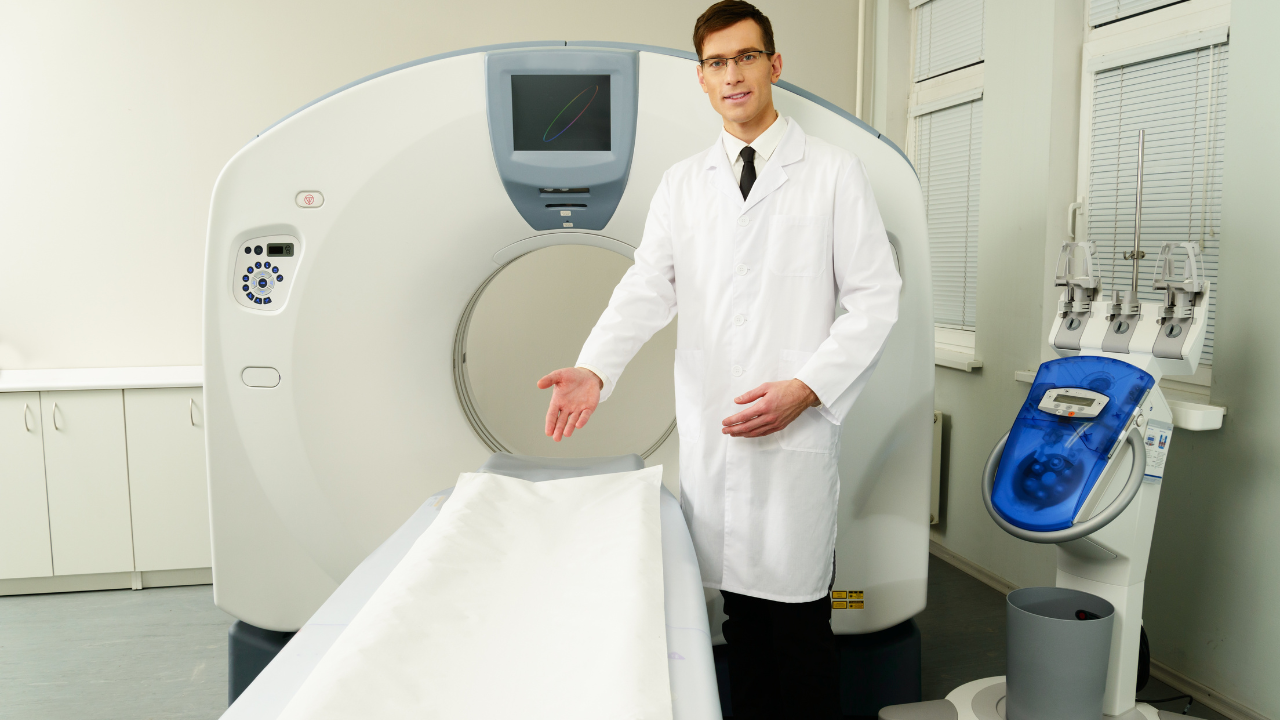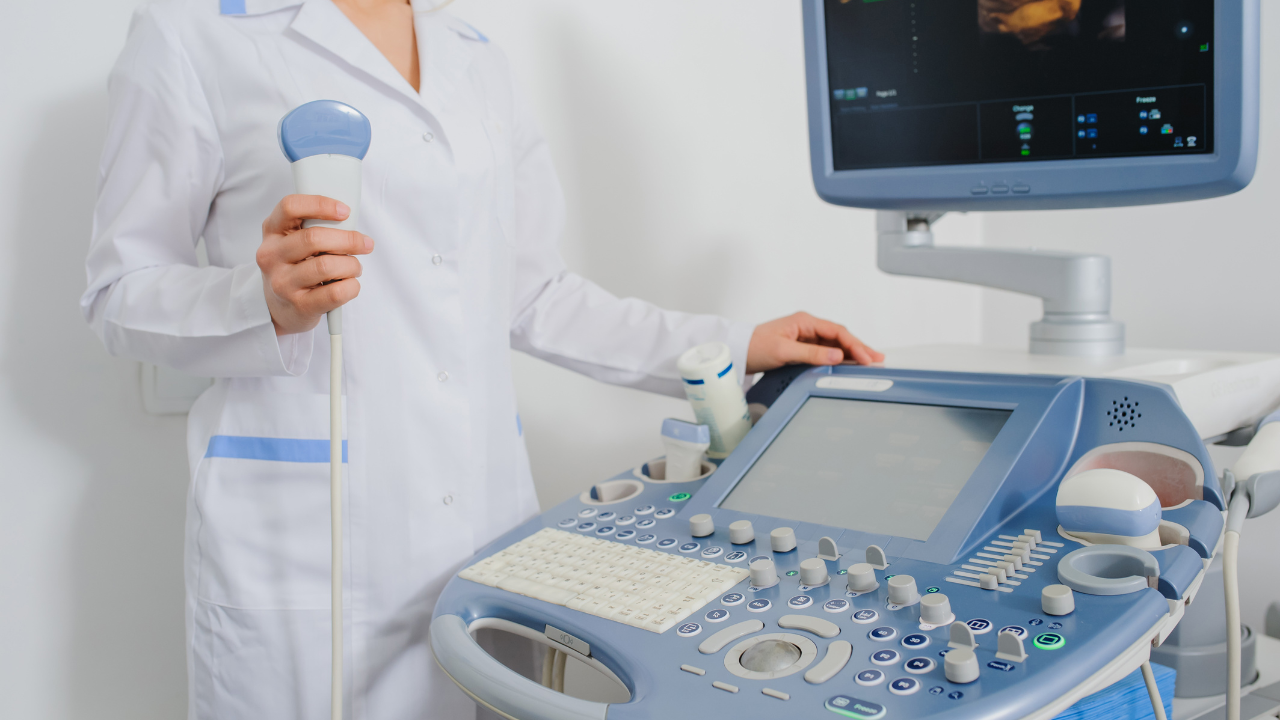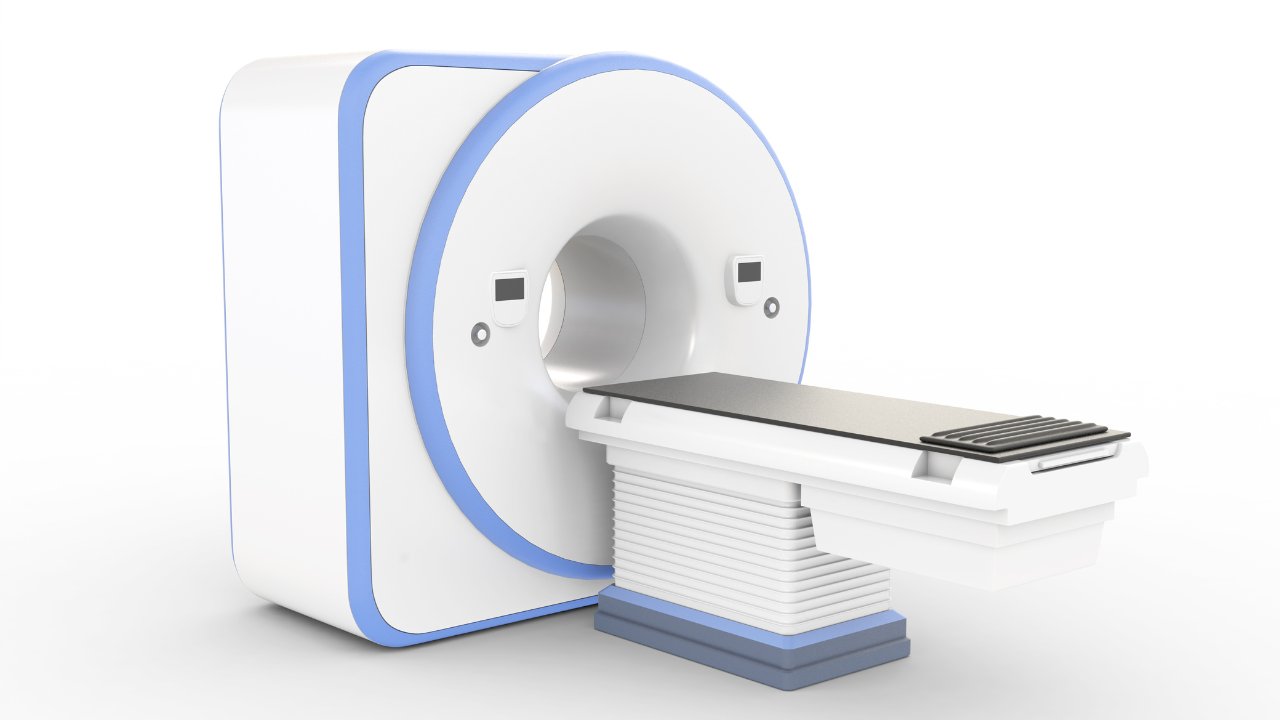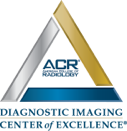Blog and News
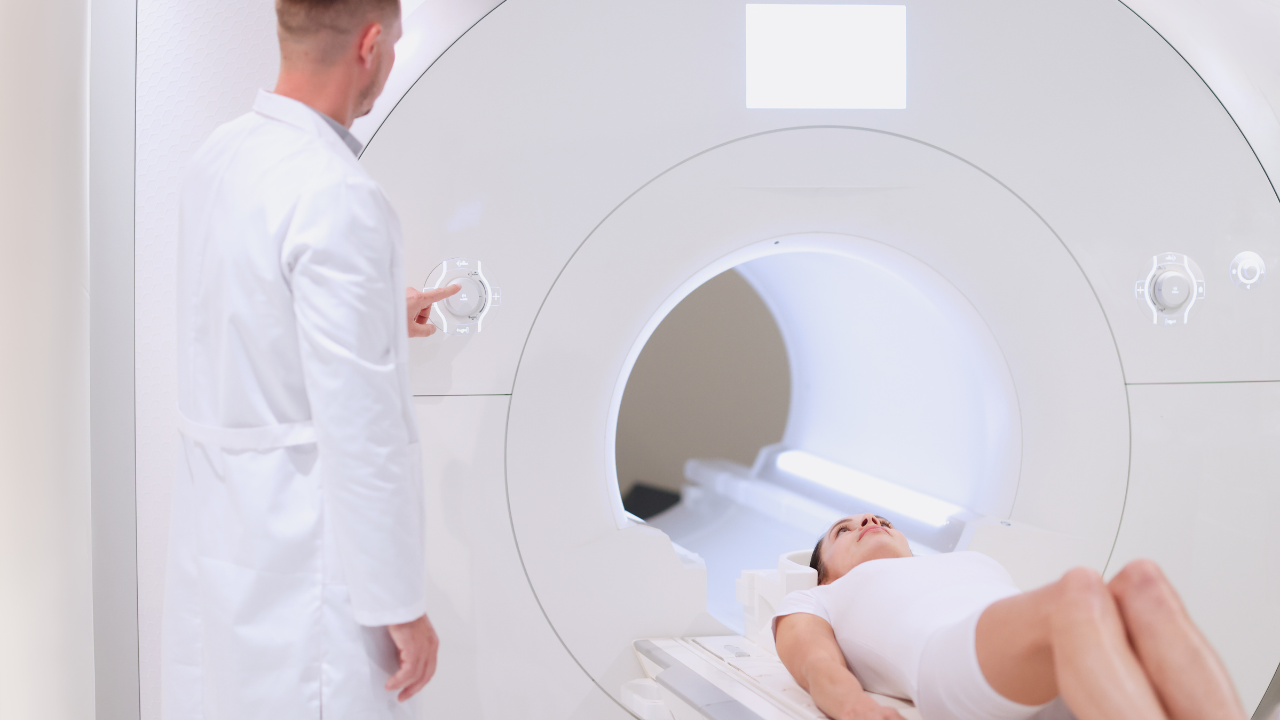
To ensure your CT scanner operates optimally, you'll need to perform regular maintenance. Schedule inspections twice a year to examine mechanical and electrical parts, ensuring components like the gantry rotation and high-tension cables function smoothly. Regularly update your scanner's software to boost performance and enhance cybersecurity. Calibrating the scanner's accuracy is critical; use a phantom to verify settings and adjust as necessary. Replace critical components, like the X-ray tube and detectors, before they fail to maintain image quality and reduce downtime. Additionally, training your staff on these protocols ensures efficient handling and safety. There's more to explore for deeper insights into each practice.
Listen to the Article
Key Takeaways
- Schedule biannual inspections to check mechanical, electrical, and cooling systems.
- Keep software updated to enhance performance and ensure cybersecurity.
- Regularly verify and recalibrate scanner calibration using phantoms.
- Replace critical components like X-ray tubes and detectors as needed.
- Conduct routine staff training on updated software and safety protocols.
Schedule Regular Inspections
To ensure optimal performance and prevent costly repairs, you should schedule regular inspections for your CT scanner at least twice a year. These inspections are crucial as they involve a thorough check of the mechanical and electrical components. It's your responsibility to ensure that the gantry, which houses the x-ray tube and detectors, rotates smoothly without abnormal noise or resistance. You'll also want to verify the integrity of the high-tension cables and inspect the cooling systems to prevent overheating that can lead to system failure.
It's important to examine the condition of the detectors closely. Any degradation can affect the quality of the images produced, which is paramount in diagnosing patients accurately. The calibration of the scanner should be checked regularly to maintain the precision of imaging. This includes verifying the alignment of the laser positioning system, which ensures that the patient is correctly placed relative to the beam.
Maintain Software Updates
Keeping your CT scanner's software up to date is crucial for ensuring the system operates efficiently and integrates the latest security patches and functionality enhancements. Regular updates not only enhance the performance but also fortify the scanner against potential cybersecurity threats, which are increasingly becoming a concern in medical devices. These updates can include new algorithms that improve image quality and reduce scan times, directly impacting patient throughput and diagnostic accuracy.
When you install the latest software, you're also ensuring compatibility with newer hardware components and other integrated systems. This is vital for maintaining seamless workflow transitions and minimizing downtime, which can be critical in a high-demand medical environment. Typically, the scanner's manufacturer will release software updates periodically. It's essential you subscribe to update notifications and schedule installations promptly.
To manage these updates, you should establish a protocol within your facility's IT department. Ensure that backups are created before applying any updates to prevent data loss. Moreover, after an update, a thorough testing phase is critical to confirm that all components of the CT scanner function as intended. This proactive approach in maintaining the software lifecycle not only supports your role in patient care but also safeguards the longevity and reliability of your equipment.
Verify Scanner Calibration
After ensuring your CT scanner's software is up to date, it's important to regularly verify the calibration to maintain accuracy in diagnostics. Calibration is the process that ensures the images produced by your scanner accurately represent the scanned objects. This step is crucial for reliable diagnostics that can lead to timely and effective patient care.
You'll want to start by consulting the manufacturer's guidelines, which specify the frequency and methods for calibration checks. Typically, this involves using a phantom —a specially designed object that mimics human tissue's x-ray absorption characteristics. By scanning the phantom, you can compare its known dimensions and density to the images produced by the scanner.
If discrepancies are found during these tests, recalibration must be carried out. You'll adjust the scanner's settings until the phantom's test scans consistently match the expected output. This process might require iteration, tweaking various parameters and rescanning the phantom until the output is within acceptable tolerance levels.
Replace Worn Components
To ensure your CT scanner operates at peak efficiency, you must identify critical components prone to wear and tear.
Scheduling regular inspections allows you to assess their condition and foresee potential failures.
Implementing timely replacements of these components will prevent unexpected downtimes and maintain imaging quality.
Identify Critical Components
Regularly identifying and replacing worn components is crucial for maintaining optimal performance and safety of your CT scanner. It's essential to focus on critical parts such as the X-ray tube, detectors, and cooling systems.
These components are pivotal as they directly affect the scanner's accuracy and image quality. The X-ray tube, especially, is prone to wear due to its constant exposure to high voltages and temperatures. You'll want to monitor its performance closely, looking for signs of decreased output or increased noise levels.
Similarly, detectors, which capture the X-rays to create images, can degrade over time, leading to loss of image clarity. Ensuring these components function correctly is paramount in providing reliable diagnostic information and maintaining the trust of those you serve.
Schedule Regular Inspections
Scheduling routine inspections allows you to detect and replace worn components before they compromise your CT scanner's performance. By maintaining a vigilant eye on your scanner's health, you're actively ensuring the highest standard of care for your patients. Regular checks can reveal subtle signs of wear that mightn't yet be causing visible issues but could lead to bigger problems if not addressed.
- Inspect Mechanical Parts: Focus on belts, bearings, and motors, which are prone to wear and tear.
- Check Cooling Systems: Ensure that the coolant levels are adequate and the system is free from leaks to prevent overheating.
- Evaluate Software Integrity: Regular software assessments can spot glitches that might affect operational accuracy or data integrity.
Stay proactive in maintaining your equipment to provide the best patient care.
Implement Timely Replacements
Although maintaining regular inspections is crucial, you must also implement timely replacements of worn components to ensure your CT scanner operates at peak efficiency.
Identifying parts such as the X-ray tube, detectors, and high-voltage generators that suffer from wear-and-tear is essential. You should closely monitor the performance metrics and error logs provided by the scanner's software diagnostics to pinpoint potential failures before they escalate.
Replacing these components promptly can prevent prolonged downtime and ensures that the scanner remains reliable for critical diagnostic procedures. Always use manufacturer-approved parts to maintain system compatibility and performance.
Train Operational Staff
To ensure optimal performance of your CT scanner, you must train operational staff thoroughly on both routine procedures and emergency protocols. Efficient and precise training not only enhances the functionality of the equipment but also ensures the safety and comfort of patients.
Here's how you can implement an effective training program:
- Comprehensive Onboarding: Start with a detailed orientation that covers the full capabilities and functionalities of the CT scanner. Ensure that each team member understands the basic principles of operation, including start-up, running diagnostic checks, and shutdown processes.
- Regular Skill Updates: Technology and best practices evolve, so regular training sessions are crucial. These should include updates on software enhancements, changes in scanning protocols, and introductions to new features. It's also beneficial to include case studies that demonstrate problem-solving in unexpected situations.
- Hands-on Simulation Drills: Conduct regular drills using simulations of both common and rare scenarios that the staff might encounter. This practical approach helps in cementing knowledge and boosts confidence in handling real-life situations efficiently.
Monitor Radiation Safety
Ensure you consistently monitor radiation exposure levels to maintain safe operating conditions for both patients and staff. As you're aware, CT scanners utilize ionizing radiation, which, while effective for diagnostic imaging, poses risks if not carefully controlled. You'll need to regularly check and calibrate the radiation dosimeters. These devices measure the amount of exposure during each scan, ensuring it stays within safe limits as prescribed by health and safety guidelines.
It's crucial to conduct routine inspections of the scanner's shielding materials. Look for any signs of wear or damage that could lead to leakage of radiation. This isn't just about regulatory compliance; it's about protecting those who rely on your facility for their healthcare needs. You're also responsible for maintaining a log of radiation exposure for each patient. This data is vital for tracking cumulative exposure and is essential in the case of audits by health authorities.
Training your team on the latest radiation safety protocols is also non-negotiable. They should be adept at using all protective gear and understand the importance of minimizing exposure times. Remember, your vigilance in these areas not only ensures compliance but fundamentally supports the well-being of everyone entering your CT suite.
Frequently Asked Questions
How Does Temperature Affect a CT Scanner's Performance?
Extreme temperatures can degrade your CT scanner's performance by affecting component stability and image quality. You'll need to maintain optimal room conditions to ensure the system functions efficiently and prolongs its operational lifespan.
Can Mobile CT Scanners Be Maintained the Same Way?
Yes, you can maintain mobile CT scanners similarly, but you'll need to pay extra attention to calibration and stabilization due to their movement between locations, ensuring they continue to serve patients effectively.
What Are Common Errors Users Make With CT Scanners?
Navigating through the maze of CT scanner use, you'll often find errors like improper calibration, neglecting software updates, and inadequate cleaning. These mistakes can compromise diagnostic accuracy and scanner longevity.
How Do Power Fluctuations Impact CT Scanner Functioning?
Power fluctuations can severely impair your CT scanner's performance by causing system errors and potential hardware damage. You'll need to install surge protectors and maintain stable power supply to mitigate these risks effectively.
What Is the Lifespan of a Typical CT Scanner?
Typically, a CT scanner's lifespan ranges from 7 to 10 years, depending on usage and maintenance. Regular calibration and software updates are crucial to extend its service life and ensure optimal performance.
Services
Contact Details
Address: 1971 Gowdey Road,
Naperville, IL 60563
Phone: 630-416-1300
Fax:
630-416-1511
Email: info@foxvalleyimaging.com
© Copyright 2023 Fox Valley Imaging, Inc..


